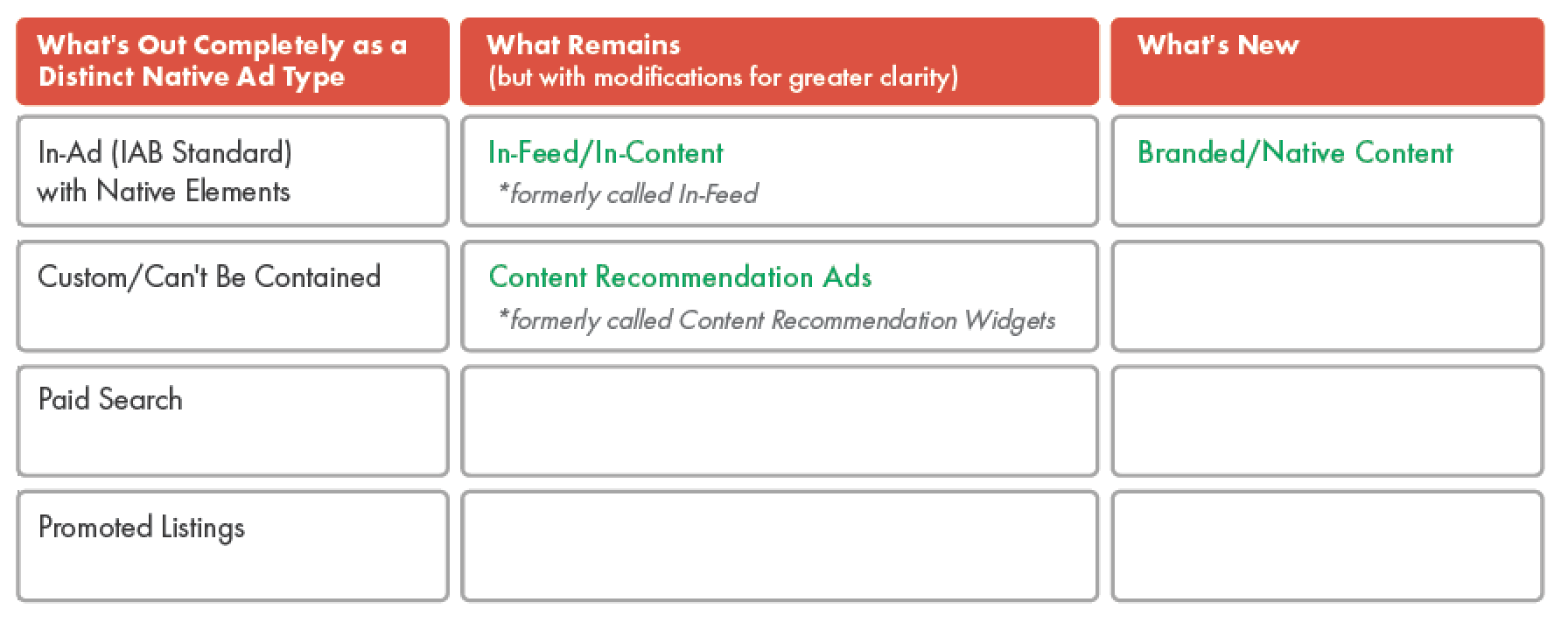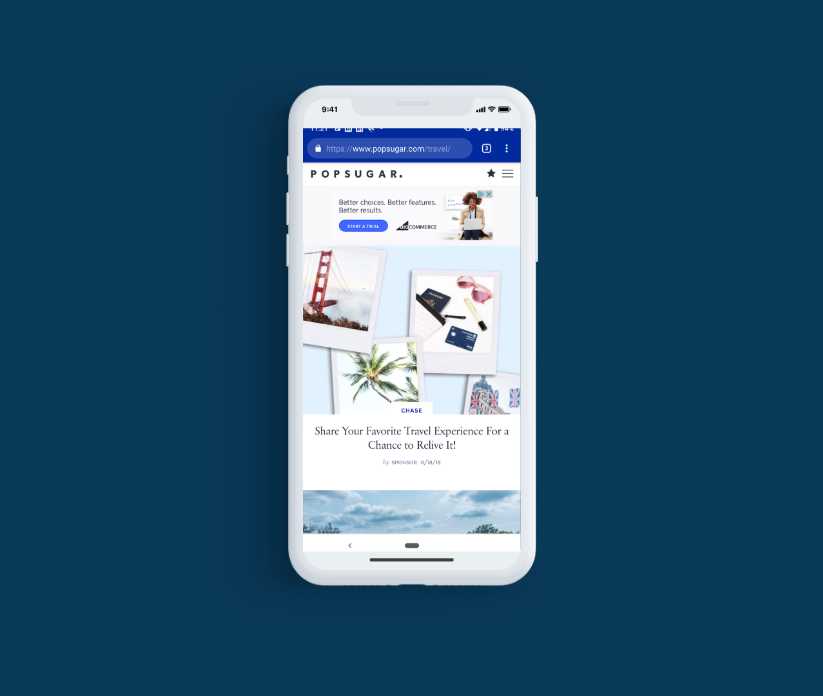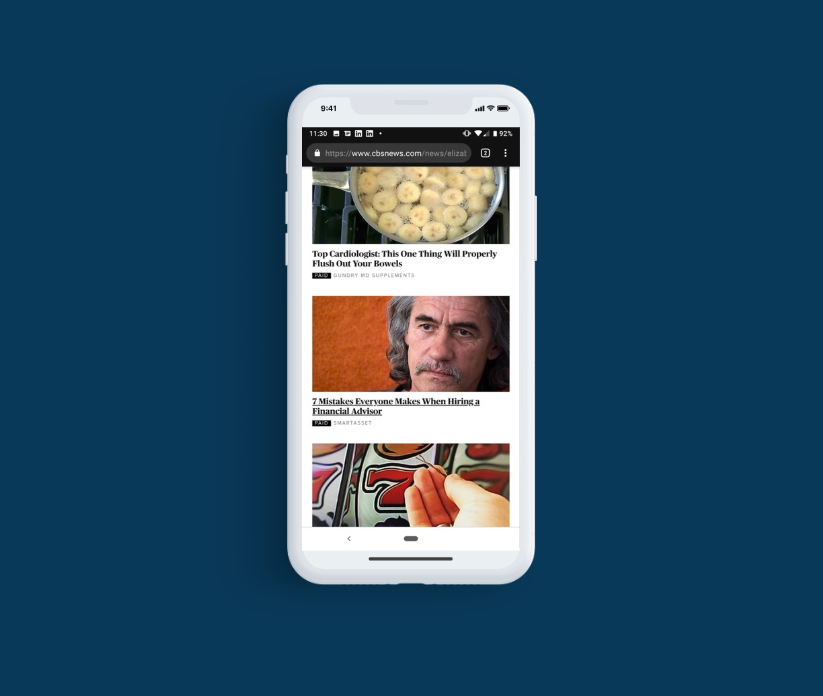Native advertising now accounts for the largest share of all digital advertising.
Back in 2013, when native advertising wasn’t so dominant, the U.S.-based Interactive Advertising Bureau (IAB) provided the industry with a playbook, or framework, defining native advertising options.
But here we are in 2019. The same question begs for new answers: how should native ad units be defined?
The authorities at IAB delivered these new insights in playbook 2.0. To do so, 69 members of the IAB, including us, contributed to it. This playbook provides up-to-date clarification on the state of native and its ad types.
Here’s a summary of what the IAB has to say in the Native Advertising Playbook 2.0, published in mid-2019.
The Marketer's Guide to the Major Players in Native Advertising
Native has evolved
What hasn’t? In digital marketing changes come daily. The new IAB playbook kicks off with a ‘Then and Now’ table to get you up to speed. Here are its juiciest nuggets:
- Native’s no longer an experiment. In 2013, a few publisher studios led the way and were experimenting. Now, nearly every publisher has a studio for native ad creation.
- Paid social has exploded. In 2013, paid social was emerging, garnering 10% of digital ad revenue. Flash forward to now and it represents 25% of digital ad revenue.
- The money’s in mobile. Mobile revenue was nearly $43 billion six years ago. Now it’s more than doubled.
- Display ads are largely native. Native display spend rises steadily. It now accounts for 63% of overall display spend.
Native advertising in review
The report says native advertising is a ‘concept’ that advertisers and publishers use to deliver ads that are cohesive with the page content, assimilated into the design, and consistent with the platform’s behavior. The viewer should feel the ads belong.
A direct quote from the report reads:
“The distinction between native ads and standard ads is the ability of native to follow the natural design, location and ad behavior of the environment in which it was placed with content that provides a relevant consumer experience in the context of the page the ad lives on.”
The field’s been narrowed to three ad types

The IAB defined six distinct native ad types in its 2013 playbook. The new playbook has just three. It removed:
- In-ad with native elements
- Custom/not contained
- Paid search
- Promoted listings
Two of the 2013 types remain:
- In-feed/in-content
- Content recommendation ads
It added one ad type:
- Branded/native content
The IAB defines the three ad types prevalent today as:
1. In-feed and in-content
Ads on content, commerce and social feeds qualify for this format. Consumers see in-feed ads while scrolling the listings of article summaries. In-feed native ads typically appear in content feeds, product feeds, and on social feeds.
In-content means the ads are placed on the article pages, but between paragraphs or below the article.

2. Content recommendation ads
These native ads appear in widgets, commonly displayed beside, between or below editorial content or other paid content. These ads are content discovery ads (our favorite definition here at Taboola), sponsored content ads, and content recommendation widgets.

3. Branded or native
This newly defined paid content ad-type from a brand is published in the same format as the publisher’s site. These editorial-style ads are generally created in conjunction with the publisher’s content teams. These ads are known as brand content, sponsored content and custom content. The content served to any viewer who clicks appears on a page that’s hosted and served by the publisher. Note, this is not usually the case with the previously defined formats.

Let’s play fair
All of us involved in the native advertising business want to see the field grow with the utmost transparency and integrity. As such, as the native advertising landscape evolves, it remains paramount to clearly label ads as paid or sponsored.
The IAB report acknowledges it’s impossible to recommend a one-size-fits-all disclosure mechanism, but recommends that publisher’s do the following:
- Use language that shows that the content is a paid ad, making it an advertising unit, even if that unit does not contain traditional promotional advertising messages.
- Be large and visible enough for a consumer to notice it in the context of a given page and/or relative to the device used to viewed it.
You can learn more about where the Federal Trade Commission (FTC) stands on native advertising policy here, in its published guide.